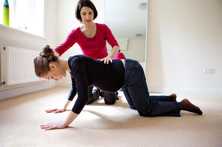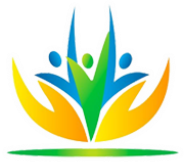 People come to the Alexander Technique for so many reasons, such as illness, chronic conditions, stress patterns in mind and body, pain, injuries, lack of self-confidence, pregnancy issues, frustration with limits of achievement at work or hobbies. Childhood patterns of use are usually out of date and more education helps with expanding the senses and skills. With the Alexander Technique, everyone can learn the underlying skill of staying in the present and not interfere with unhelpful patterns – leaving space for new territory of thinking, behaving and moving, taking responsibility and embrace change towards more freedom. Feeling something usually involves a physical component or is at least not a neutral sensation. Working with the Alexander Technique engages the sensory sense – what people feel. F. M. Alexander repeatedly writes about people’s cravings to feel the same feelings even though this means constantly repeating unfavourable and habits. Habits feel right despite their possibly damaging quality. Habits also limit a person’s ability to respond to the present. Habits are locked into the past. They are psycho-physical memories which intrinsically stop a person from responding to the present. Habits cause a person to have faulty sensory perception. However, with the micro-level of the haptic work (physical contact work) of the Alexander Technique, a qualified practitioner is able to identify how a person’s habit interferes with the use and functioning of a person and help the person to change toward awareness in activity and good use. This does not require therapy but re-education (Alexander, pp 64 – 78). The various senses are being (re-)trained through growing awareness and congruence in thinking, sensing and moving. Working with the Alexander Technique for twenty years has shown me how faulty the sensory awareness is of most of the population. People are usually extremely surprised when they work in front of a mirror and their perception about their use does not match with what they see. The kinaesthetic (direction and movement), proprioceptive (position of body parts) senses are, for most of the population indeed faulty and incongruent with the own perception of a person. Teachers of the Alexander Technique are haptic experts. With their extremely thoroughly trained haptic sense, they “read” the quality of a person’s muscle tonus during particular movements. They assess the relational proportion between a person’s effort of thinking and the person’s movement or activity they are asked to carry out, such as standing and sitting. They identify muscles that are over, and/or underdeveloped in activity. Even though, a person might insist that it feels right to either use too little muscle or too much muscle activity, the practitioner might identify how the feeling is misguiding for good use. The practitioner will help the client to experience the feeling of “being wrong”. The ability to feel “strange” or wrong is essential for changing limiting habits and patterns. Mammals, and therefore humans, do not only consist of organs, muscles and bones, veins, etc. All those parts are held together by fascia – a flexible, webbing tissue in and around muscles. It keeps the parts in place and protects them when there is an impact. Ironically, in our low-level moving and sedentary society, the biggest impact our bodies experience is by being held still. From a very early age, children are requested to sit still. Sitting still asks the fascia to hold us in place too, not only the muscles or bony structure. The fascia helps us shape our bodies. Hence, particular habits require the fascia to adjust for good or for worse. Additionally, the Alexander Technique works indirectly with something called muscle spindles which are responsible for lengthening a muscle. These spindles sit in the belly of the muscle and are micro-organs that relate to the conscious brain. They do not respond to being pulled or pushed. Rather, through conscious engagement they can be “contacted” and lengthen. Hence, the Alexander Technique engages a person’s cognitive activity. Through movement, a person receives stimuli and instead of automatically reacting to a stimulus, a person is facilitated in responding in the here and now with more beneficial cognitive, behavioural, physical and emotional responses. Change is facilitated and rehearsed. Over time, a person is able to spot her/his unhelpful pattern and replace it by not interfering with more beneficial thinking, action and movement. This takes time and a willingness of a person to engage in learning. The Alexander Technique teacher does not do things to people but works alongside them to explore and change damaging habits. Already Alexander identified that some diagnosis of a physical illness can be rephrased as unconscious destructive activities that feel right but cause enormous problems. The Alexander Technique is therefore not a quick fix but requires a sincere engagement of people who wish to stop doing unhelpful things to themselves and replace them with awareness in activity. People are usually surprised how they can change, no matter what their condition is. They realise that they can either carry on hurting themselves or learn to stay out of their own way so that their organism can rebalance itself as best as it can. Doris Prugel-Bennett
0 Comments
Leave a Reply. |
The Holistic Life CoachHolistic & Natural Solutions for Health and Wellbeing Categories
All
Archives
March 2018
|
COOKIE POLICYWe use cookies on this site to help us improve your experience. If you wish to understand fully how we use these, click through for our 'cookie policy'.
PRIVACY POLICY |
disclaimerAll material on this website is provided for your information only and may not be construed as medical advice or instruction. |
Contact UsSubscribeJoin our mailing list today!
|


 RSS Feed
RSS Feed